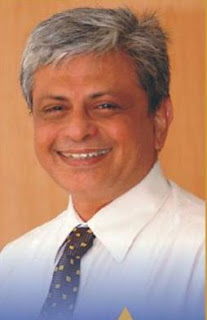The objectives of this short ten minute exercise -
- To learn a tool that will be helpful in work life
- To apply the learning within a few minutes of learning
- To use this as a morning ritual to start a great day
Step 1 - the warm up
Keep your journal and pen at hand
Sit in a relaxed position with an intent to go into a ‘flow state’ to learn something new
Take three deep, powerful breaths to lock in your focus and start the next step
Step 2 - the learning
About Value stream mapping
Value Stream Mapping (VSM), introduced in the 1990s through Lean Manufacturing, visualizes the flow of materials and information in production processes. Popularized by Toyota in its Toyota Production System, it identifies inefficiencies and opportunities to streamline operations, improve productivity, and enhance customer value by reducing waste across the value chain. This thought was brought to the western world by Mike Rother and John Shook, through their book Learning to See.
Situations (examples) where this tool can be best used
- Streamlining software development in a technology company
- Improving customer onboarding
- Optimizing manufacturing processes
The top three mental muscles (competencies) developed by practicing this tool
- Operational planning - Translating strategy into actionable, measurable goals
- Problem-solving - Addressing challenges thoughtfully and decisively
- Resourcefulness - Finding creative solutions with available resources
A corporate story to understand the usage of this tool
The Sam Walton (Walmart) story
The context
Sam Walton, the founder of Walmart, revolutionized retail with his focus on efficiency and cost savings. By employing principles of Value Stream Mapping (VSM), Walmart streamlined its supply chain to deliver low-cost products to customers efficiently.
Current state - Walmart analyzed its supply chain, identifying delays in supplier deliveries, excess inventory at distribution centers, and inefficiencies in transportation.
Identifying waste - Key inefficiencies included redundant processes, overstocking, and underutilized transportation.
Challenges
In the 1980s, Walmart faced stock outs in stores, high inventory costs in warehouses, and inefficiencies in supplier communication. These issues threatened its "Everyday Low Prices" philosophy.
Future state
Cross-docking - Products were transferred directly from supplier trucks to store-bound trucks, bypassing storage.
Technology integration - Walmart implemented barcode scanning and real-time inventory tracking to improve accuracy.
Optimized transportation - Full truckloads and a hub-and-spoke distribution model reduced costs.
Results - Walmart reduced lead times, minimized costs, and improved product availability. The streamlined supply chain supported Walmart’s rapid expansion and strengthened its cost leadership.
A story from the World Wars
My personal story
The context - A company had asked me to conduct a workshop to create awareness among the management team members about their competency framework. Could I use Value stream mapping to design the workshop?
Current state - The competency framework is ready but not implemented in the organisation
Challenges - The value of the competency framework was not understood or appreciated by the management team
Future state - I created a powerful future state showing them amazing possibilities they would have by learning and implementing management tools e.g. Business growth, Business process improvements, Brand enhancement, Personal competency growth, ability to solve business problems with ease by regular practice of management tool etc. The team created some 900 plus stories from their worklife as part of the workshop and learnt 30 most popular management tools in the process. Not many companies can boast of this treasure.
(Note: This example may not represent the true blue usage of the tool. Can not remember any other example from my work life. Maybe I will find a better one after I do some practice with the tool.)
Step 3 - the reflection
Sit back, go down memory lane, think of various events in your work life where you could have used this learning.
If nothing comes to mind, think of a situation that would help you answer any one of these interview questions.
- “Can you share an example of how you improved customer satisfaction?” - Explain how you used VSM to streamline processes that directly impacted customer experience, like reducing order processing or service delivery times.
- “Can you describe a time when you identified inefficiencies in a process and improved it?” - Use VSM to explain how you mapped a process, identified waste (e.g., bottlenecks, redundancies), and implemented solutions that improved efficiency and reduced costs.
- “How do you prioritize tasks or projects when managing multiple processes?” - Mention how VSM helps you focus on high-impact changes by identifying critical bottlenecks or areas that deliver the most value to the organization.
Step 4 - the practice
Apply your learning to the situation you selected above.
- Current state
- Challenges
- Future state
Step 5 - the victory lap
Celebrate your achievement for a minute. Maybe a quick victory lap doing some energizing exercise?
**
To those who felt, “People are often comfortable with existing methods and see no need to adopt new, seemingly complicated approaches.” - Do you feel that the last ten minutes were worth the effort?
This exercise is not only about management tools. It’s about building a neural pathway. And it’s about my mantra for creating small daily acts of feeling successful and happy.
Don’t forget to carry this image 👇 in your mind. There could be a great situation where you may want to use the tool. Keep a log of all such situations. This practice will help you when you want to train someone.
My congratulations for your first dose of the day of success and happiness. Have a great day ahead.

No comments:
Post a Comment